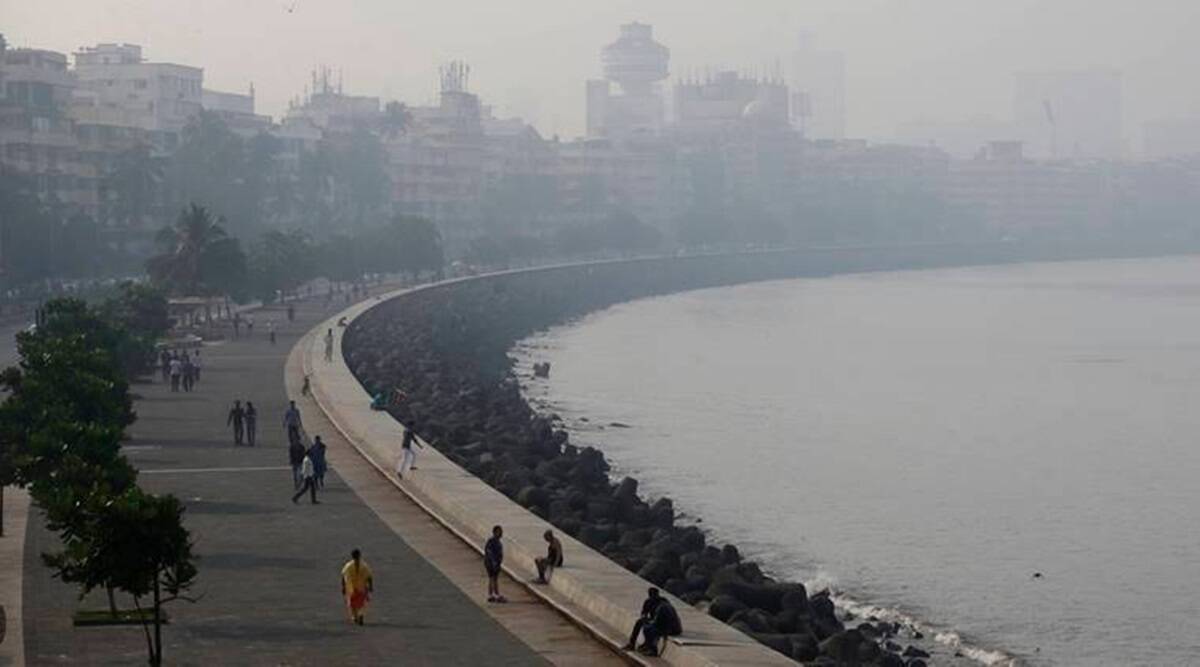 The study analysed 40 continuous ambient air quality monitoring stations (CAAQMS) in Maharashtra -- one each in Aurangabad, Kalyan, Nagpur, Nashik and Solapur, two in Chandrapur, four in Navi Mumbai, eight in Pune, and 21 in Mumbai. (File)
The study analysed 40 continuous ambient air quality monitoring stations (CAAQMS) in Maharashtra -- one each in Aurangabad, Kalyan, Nagpur, Nashik and Solapur, two in Chandrapur, four in Navi Mumbai, eight in Pune, and 21 in Mumbai. (File) Despite geographical advantages and favourable meteorology, air pollution is rapidly becoming a matter of concern in Maharashtra, a new analysis of regional air pollution levels by the Centre for Science and Environment (CSE), a New Delhi-based research and advocacy organisation, has found.
Even though most cities in the state recorded a drop in pollution levels during the early months of 2020 when a strict lockdown was enforced, a rising trend in annual Particulate Matter 2.5 levels has been recorded since then.
Daily Air Quality Index (AQI) analysis based on the 10 oldest stations in Mumbai showed a 20 per cent drop in the number of good AQI days between 2019 and 2021 even as days with poor or very poor AQI have doubled. AQI is a mean of pollutants such as particulate matter (PM2.5 and PM10), ozone (O3), nitrogen dioxide (NO2), sulphur dioxide (SO2) and carbon monoxide (CO) emissions as a single value. The higher the AQI value, the greater the level of air pollution and greater the health concern.
The study analysed 40 continuous ambient air quality monitoring stations (CAAQMS) in Maharashtra — one each in Aurangabad, Kalyan, Nagpur, Nashik and Solapur, two in Chandrapur, four in Navi Mumbai, eight in Pune, and 21 in Mumbai.
In December 2021, the stations in south Mumbai recorded significantly higher PM2.5 levels compared to the rest of the city. Mazgaon with a monthly average of 134 ug/m3 was the most polluted area, followed by Navy Nagar in Colaba (124 ug/m3), Kurla (101 ug/m3), Vile Parle West (101 ug/m3) and Worli (97 ug/m3). Khindipada at the edge of Sanjay Gandhi National Park in the western suburbs, with a monthly average of 54 ug/m3, was the least polluted area in the city.
According to the 2009 National Ambient Air Quality Standards, the annual safety limit of PM2.5 is 40 micrograms/cubic metre. Made up of hundreds of chemicals, PM 2.5 pollutants are emitted into the air by construction sites, unpaved roads, fields, smokestacks, fires, power plants, factories and automobiles.
Winter pollution sets during late December and early January when cooler and calmer conditions trap the local pollution, which is high. Starting mid-November last year, Mumbai has been recording poor to very poor AQI, nearing 300.
“Even though winter pollution levels in the western region are not as high (as that seen in the Indo-Gangetic Plains) due to its proximity to the sea and improved ventilation, the levels have been seen to be increasing despite the geographical advantages and favourable meteorology,” read the analysis.
The study has also highlighted gaps in the data from monitoring stations. For instance, in Mumbai, CSE found that Kurla station had only 55 per cent data while Malad West came up with 68 per cent. Kalyan and Aurangabad were data-deficient as well, with 66 per cent and 43 per cent data availability, respectively. Only one out of eight stations of Pune meet the minimum requirement – the city’s stations have a data availability of less than 75 per cent.
- The Indian Express website has been rated GREEN for its credibility and trustworthiness by Newsguard, a global service that rates news sources for their journalistic standards.

